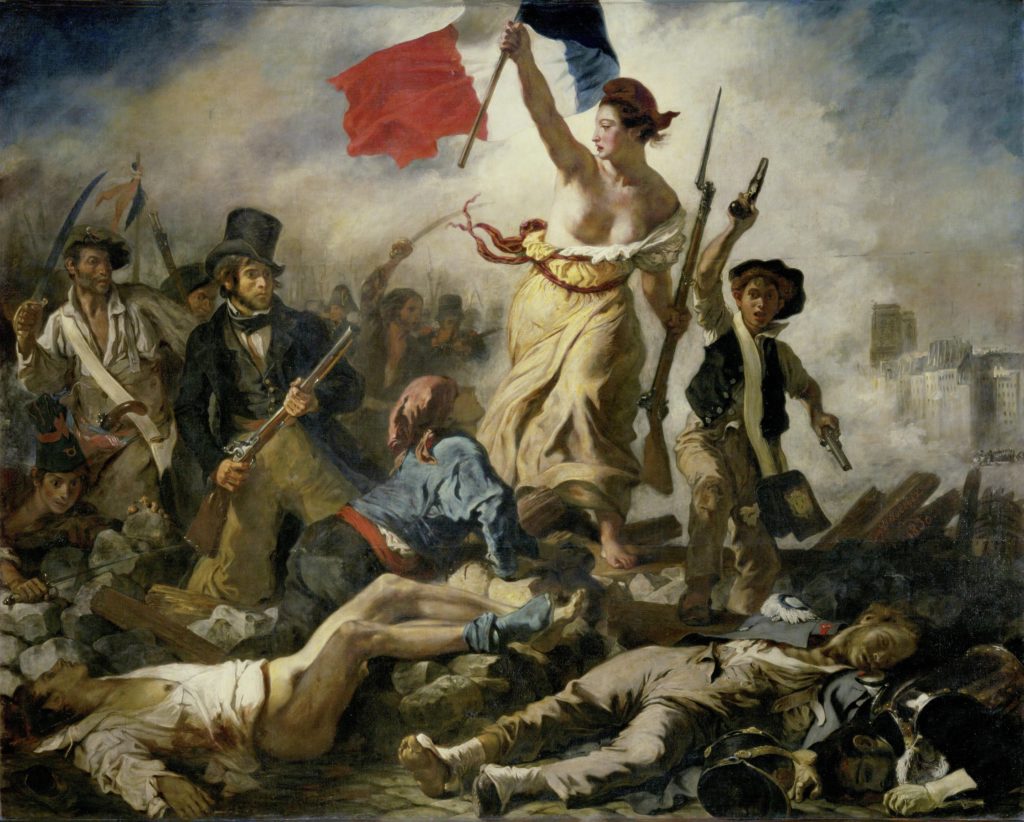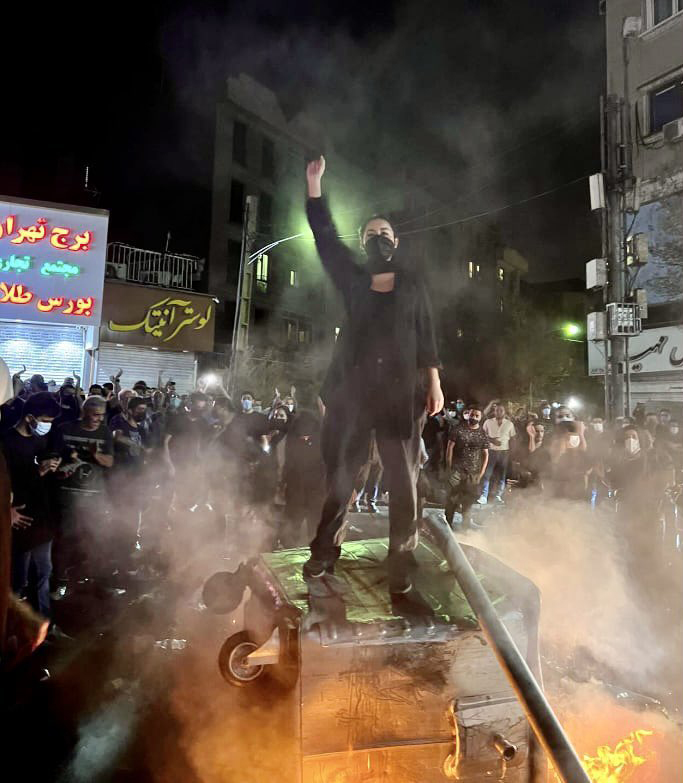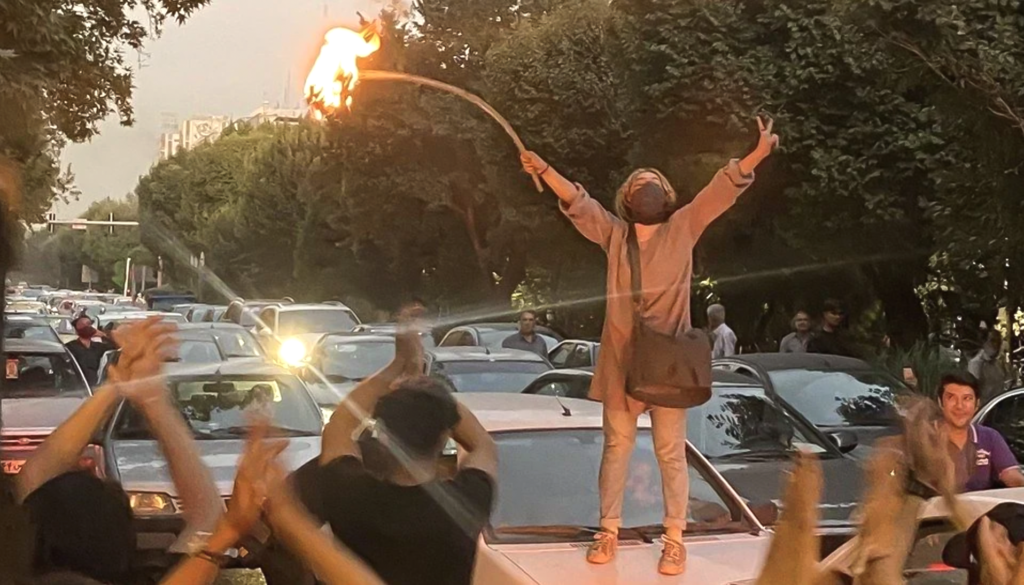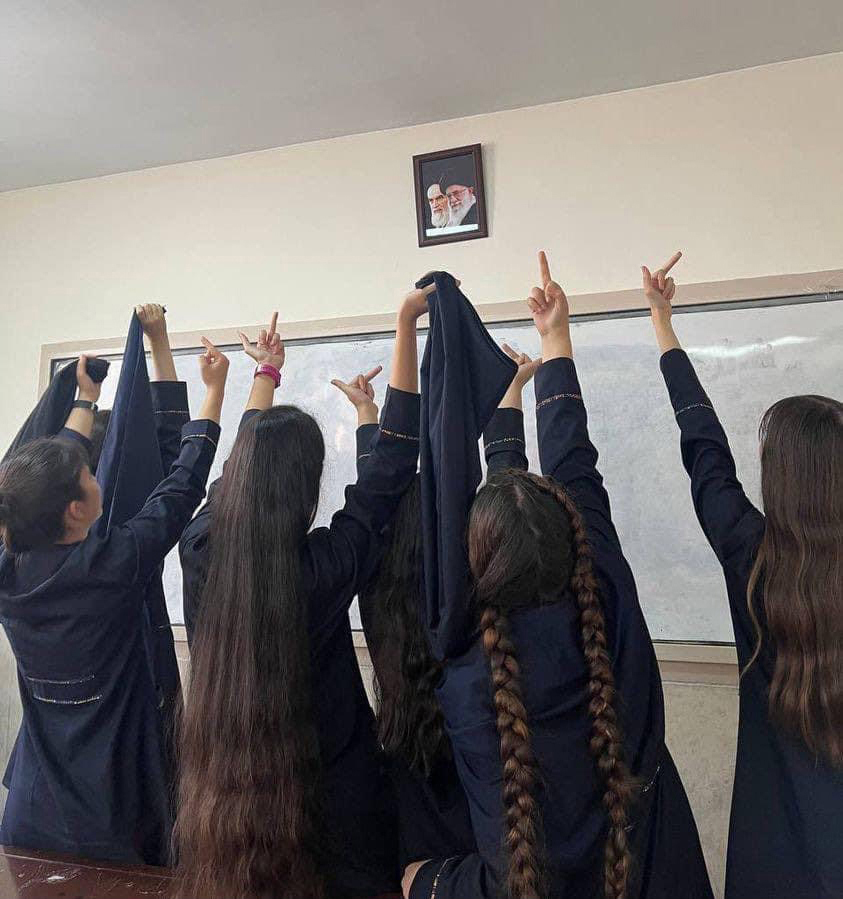Capturing a revolution in pictures
How do you distill the concept of revolution down to one single picture? Both Wikipedia and Encyclopedia Britannica have opted for the painting Liberty Leading the People, which depicts a topless woman waving the tricolor on top of a mound of corpses, during what many have mistaken for the French revolution.
Interestingly, several of the already iconic photos from the feminist revolution in Iran utilize similar imagery. Women standing on toppled cargo containers, car hoods and roofs, doing the V sign or waving sticks attached to their burning headscarves.
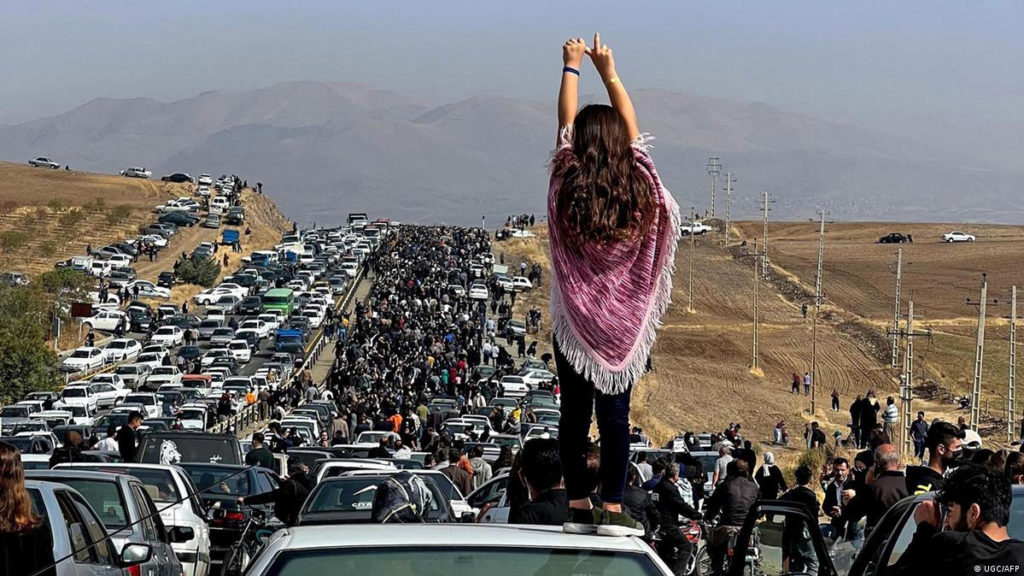
Thousands of Iranians made the pilgrimage to Jina Mahsa Amini’s hometown 40 days after she was killed by the Iranian regime’s “morality police”.
And they’re cheered on by women as well as men — a beautiful symbol of how doomed the Islamic regime’s gender apartheid is. In the same way as Delacroix’ revolution painting from 1830 pictures the death of aristocracy and feudalism resulting from social classes refusing to stay divided any longer.
One important difference, however, is the fact that the woman in his painting is a figment of his imagination*, while the revolution in Iran is led by actual women.
Perhaps future encyclopedias will define “revolution” using pictures of Iranian schoolgirls stomping on, giving the finger to and making confetti out of the portraits of the regime’s leaders in their classrooms, and chanting “DEATH TO THE DICTATOR!” in the hallways.
A relatively harmless revolutionary prank, at least compared to what flew during the French Revolution.
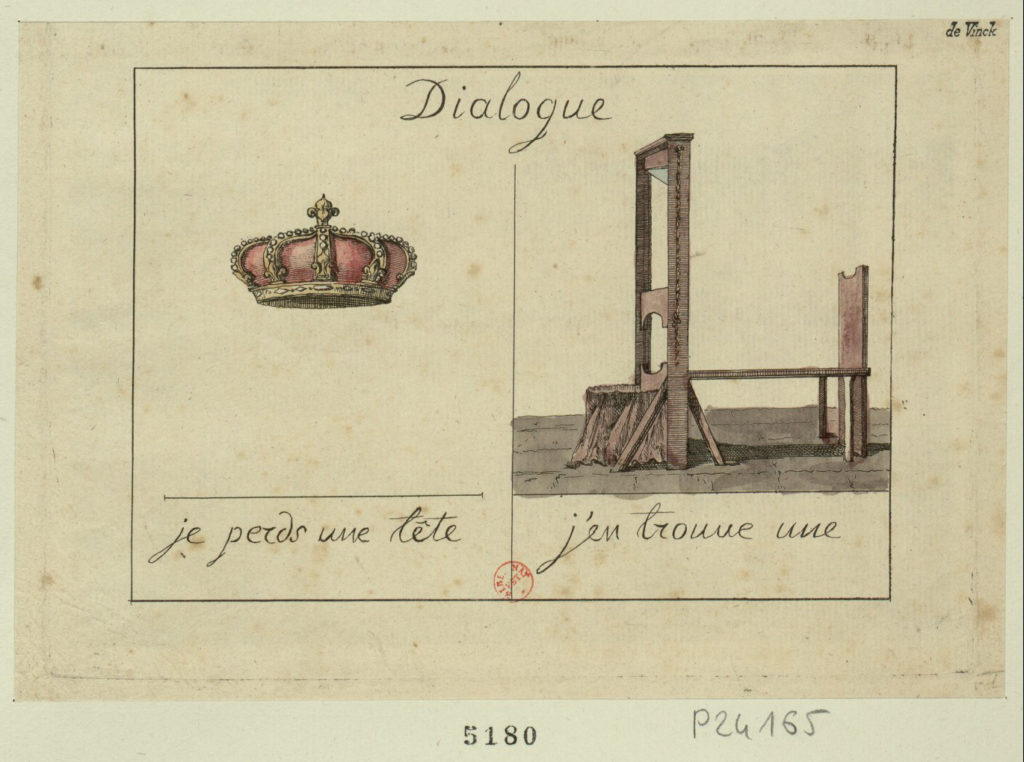
Title: Dialogue. Artist unknown. Source: The Public Domain Review
Consider it poetic justice that it has become the mullahs’ turn to look nervously over their shoulder. To quote @negmottaghi:
“It’s no longer the girls who are worried about being harassed because of their clothing, but the mullahs.”
In case you don’t remember what things were like up until very recently, take a look at this clip from 2019, where a mullah attacks a woman in the subway because of what she’s wearing — only to be interrupted by several other older men, who ask him: “Why are you behaving like this?”
Even among those wearing traditional hats. 💔
Sources
* Liberty Leading the People by Eugène Delacroix depicts the July Revolution of 1830, not the French Revolution of 1789–1799. However, it is often used to represent the French Revolution, due to the fact that it captures the spirit and ideals driving that revolution better than any other painting, and having been produced in an era of artistic freedom made possible by the same revolution.
Source: Art in Context: ”The Art of the French Revolution”
** The woman depicted in Liberty Leading the People does not represent an actual person, but rather the soul of France. These personifications of nations have often taken the shape of women, as an allusion to the nation as both a protective mother and a vulnerable maiden needing protection. Sometimes they are also depicted as warrior goddesses (note that Liberty is armed in Delacroix’s painting).
Identity Hunters: ”Women as Symbols in Nationalism”
Back to all posts about Iran

